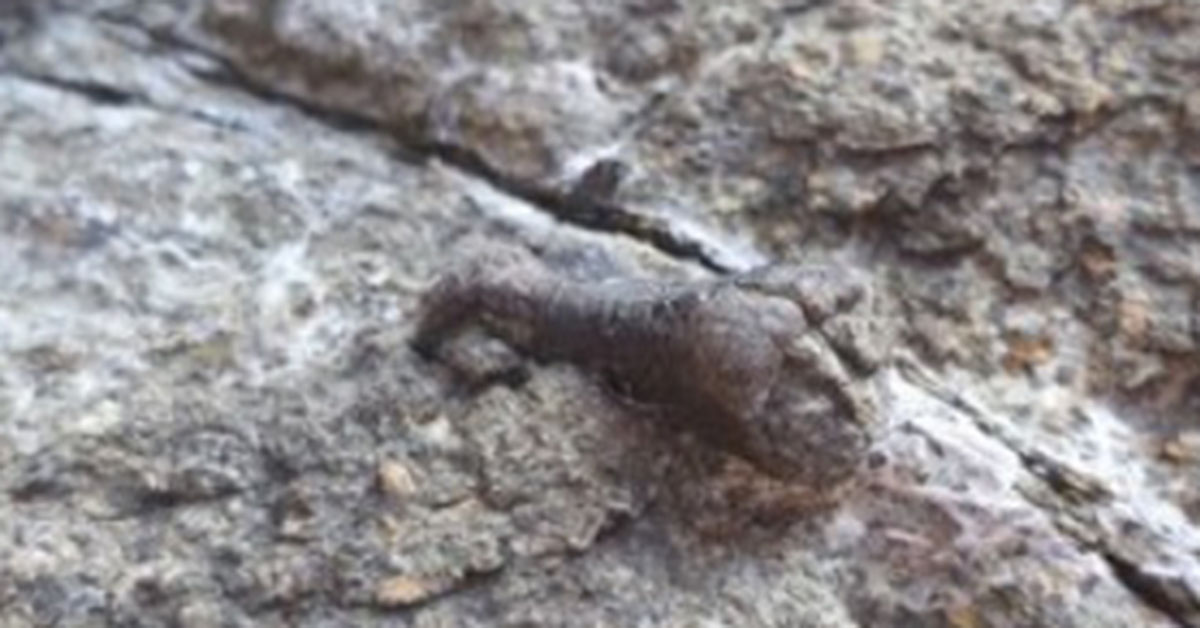
Fossil of Koreaceratops found in Tando Port, Ansan-si, Gyeonggi-do. Ansan City
“What is this?”
On the 10th of last month, a beach near Tando Port in Daebu-do, Ansan-si, Gyeonggi-do. While climbing through the rocks, Mr. A found a strange object. Something like animal claws were embedded in the rock. Mr. A reported this object in Ansan City five days later.
Dinosaur toe fossils found in Ansan Tando Port
The officials of Ansan City, who started the field investigation, were astonished. This is because it is believed to be a fossil of a dinosaur phalanx (toe bone) measuring 4.5cm in size. The back and anterior parts of the toe bone were almost completely preserved. Ansan City immediately reported to the Cultural Heritage Administration.
Ansan City considers this fossil to be the toe bone of’Koreaceratops’, a primitive ceratopsian dinosaur that existed 120 million years ago.
Fossils of Korea Ceracorps were also found in nearby Hwaseong City. In May 2008, officials preparing for the World Yachting Competition at Jeongok Port, Hwaseong Fortress, discovered a dinosaur bone with the spine, ribs, and leg bones fully exposed.
It was presumed to be a ceratopsian dinosaur with horns on its head, such as Triceratops and Protoceratops, but it was different from the dinosaur bones found so far.

Reconstruction of the fossil of the horned dinosaur’Korea Ceratops Hwaseong Nsis’. Hwaseong City
In the tailbone, a neurite that is five times longer than the vertebrae and a talus (articular bone) with a unique shape were identified. It was believed that it had a high and flat tail and used it to swim. In particular, unlike a ceratopsian dinosaur that walked on four legs, it was believed to have walked on two legs, so it was considered a clue to the evolution that the ceratopsian dinosaurs became quadruped as their head and body grew.
Professor Yongnam Lee, who studied this fossil, named it’Koreaceratopshwaseongensis’ in the sense of “Korean horned dinosaur found on Mars.”
The reason dinosaur fossils were discovered in Hwaseong and Ansan
Dinosaur fossils have only been found in some areas, such as Gyeongsang and Jeolla Province, which have Mesozoic sedimentary layers. In addition to dinosaur footprints, new dinosaur bones were also found. In 1998, a research team from Pukyong National University in Busan discovered some dinosaur fossils in Hadong-gun, Gyeongsangnam-do. It is a dinosaur with a long neck, named as’Bukyunggosaurus’. The fossil of a meat-eating dinosaur discovered by the Korea Dinosaur Research Center of Chonnam National University in 2004 in Boseong-gun, Jeollanam-do was named’Koreanosaur Boseong Nsis’.
Koreaceratops is the third dinosaur with a Korean-related name.
Hwaseong-si and Ansan-si were the only dinosaur fossils found in Gyeonggi-do. The Sihwa Lake reclamation project, which was carried out from 1987 to 1994, was an opportunity. Fossils have been found in the drowned sea. In 1999, around 200 dinosaur eggs were found in 35 nests in Songsan-myeon, Hwaseong-si.
Five dinosaur footprints, estimated to have been photographed 100 million years ago, were also found in Ansan city and in the Daebu mine quarry in 2000.

Fossil of Horned Dinosaur’Korea Ceratops Hwaseong Nsis’. Central photo
An official from Hwaseong City said, “In the Cretaceous period, it is estimated that this area was the upper stream of the river.”
Ansan city official also said, “Tando Port is close to Songsan-myeon, Hwaseong, where fossils of dinosaur eggs are gathered, as well as Jeongok Port, where fossils of Koreaceratops were found.” It is estimated to be Ceratops,” he said.
Meanwhile, the Natural Monuments Division of the Cultural Heritage Administration decided to transfer the fossils to the National Institute of Cultural Heritage to study the fossils found in Tando Port, Ansan City. Ansan City is also planning to receive related research data from the Cultural Heritage Administration in the future and decide how to use it.
Reporter Choi Moran [email protected]
![]()
